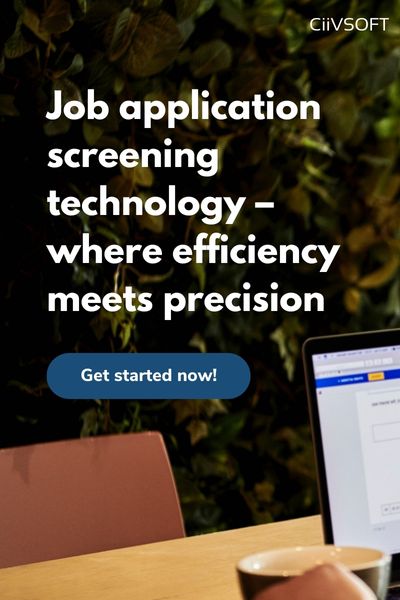CV screening is the process in which CVs are scanned, assessed and determined to be successful or unsuccessful for a potential role. This is an effective method to disregard applicants who do not possess the desired skill set, experience or candidate qualities required for the job. Uncovering successful candidates who the hiring manager deems the best fit.
Simply put, CV screening initially decides candidate progression into further recruitment stages.
Why should I be concerned?
Well, without a systematic CV screening process in place, particularly for high volume recruiting the consequences are damaging. Considering the average corporate role attracts 250 applications, not managing these correctly can lead to; bad hires, financial strains and time loss. To avoid these potential risks, we suggest 5 methods of best practice for the ultimate CV screening activity.

CV screening best practices:

1. Build a clear and concise job description
Initially look towards the job advert. Here lies the information which a candidate will scan in order to determine their compatibility with the role. A well-written job description is one that provides a role overview and highlights the necessary skills and experience. By doing this, it will help attract the right candidates and decrease the risk of irrelevant or underqualified applications.
2. Pinpoint screening specification
Set the screening criteria. This includes everything a successful candidate must possess to progress further into the recruitment process. Include factors such as; skills, technical experience, employment history and educational background.
Some recruiters also choose to screen for personality traits and look for impressive personal achievements as an indication of their character, such as leadership skills when recruiting for a managerial role.
To avoid potential bias, it is vital hiring teams set the criteria prior to screening. This method ensures recruiters don’t shift their hiring priorities halfway through the process.
3. Standardisation
Do all recruiters possess the same screening ability?
To ensure every CV is assessed equally, create a standard screening system that can be implemented across the whole hiring and recruitment department. Standardising the screening process requires a great deal of organisation, especially if completed manually. In order to achieve this, hiring teams need to follow the same method to screen candidates.
This can be completed in different phases:
The first phase – basic requirements the candidate must meet, i.e. job titles that similarly reflect the role they are applying for (denoting the essential industry experience).
The second phase – focus on their skills and the details of their experience. Can this transfer well over to the new role?
Final phase – qualifications and timelines. During this stage, if there are a considerable number of candidates remaining, you can afford to be picky. Look towards their qualifications, and length of experience as determining factors.
Following the above phases, hiring teams can look towards the desirables and the general impressions they have on the candidate as part of their final decision.
4. Recruitment bias
Be aware of potential bias. Fighting bias is high priority action taken by hiring teams to screen CVs. They must make a conscious effort to avoid favouring those due to personal perceptions surrounding factors that are irrelevant to the job role.
However, it is much more difficult to guarantee the removal of unconscious bias. If a recruiter is unaware of the rationale behind their decisions, how will they change their thought process? Because of this a candidate’s name, location, employment timeline and educational history can unfairly put their job chances at risk.
To avoid this, many organisations implement a ‘blind hiring‘ approach to CV screening. This is a method that removes all identifiable information from a candidate’s application. Only allowing recruiting teams to assess the set criteria a candidate must have to progress further, for inclusive hiring.
5. Introduce technology initiatives
CV screening technology automatically screens CVs and job applications by searching for keywords that match the job description. As this process is automated, human bias is eliminated. Meaning primary focus can be reinvested back into candidates and their job compatibility.
Screening automation also ensures every single applicant is considered. There are no risks of CVs at the bottom of the pile not receiving the same treatment as the CV a recruiter first reads. The exact same amount of time is spent on every single candidate. Which ultimately provides a fair and equal start to all those who apply.










One Comment
Deborah
Hi Rosie, those are some great tips. Being able to screen effectively is so important because it’s sets the pace for the whole hiring process and influences quality of candidates directly.